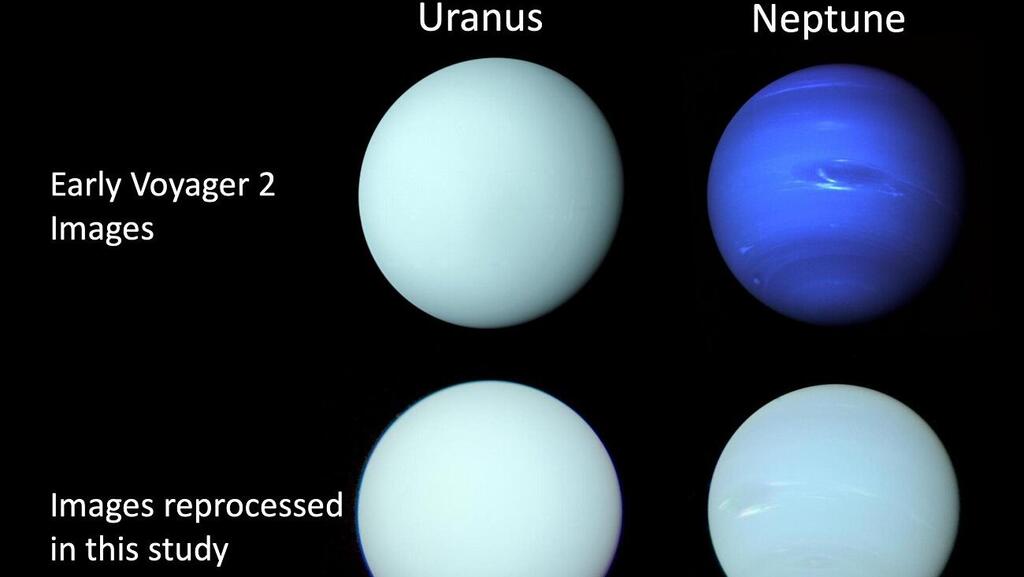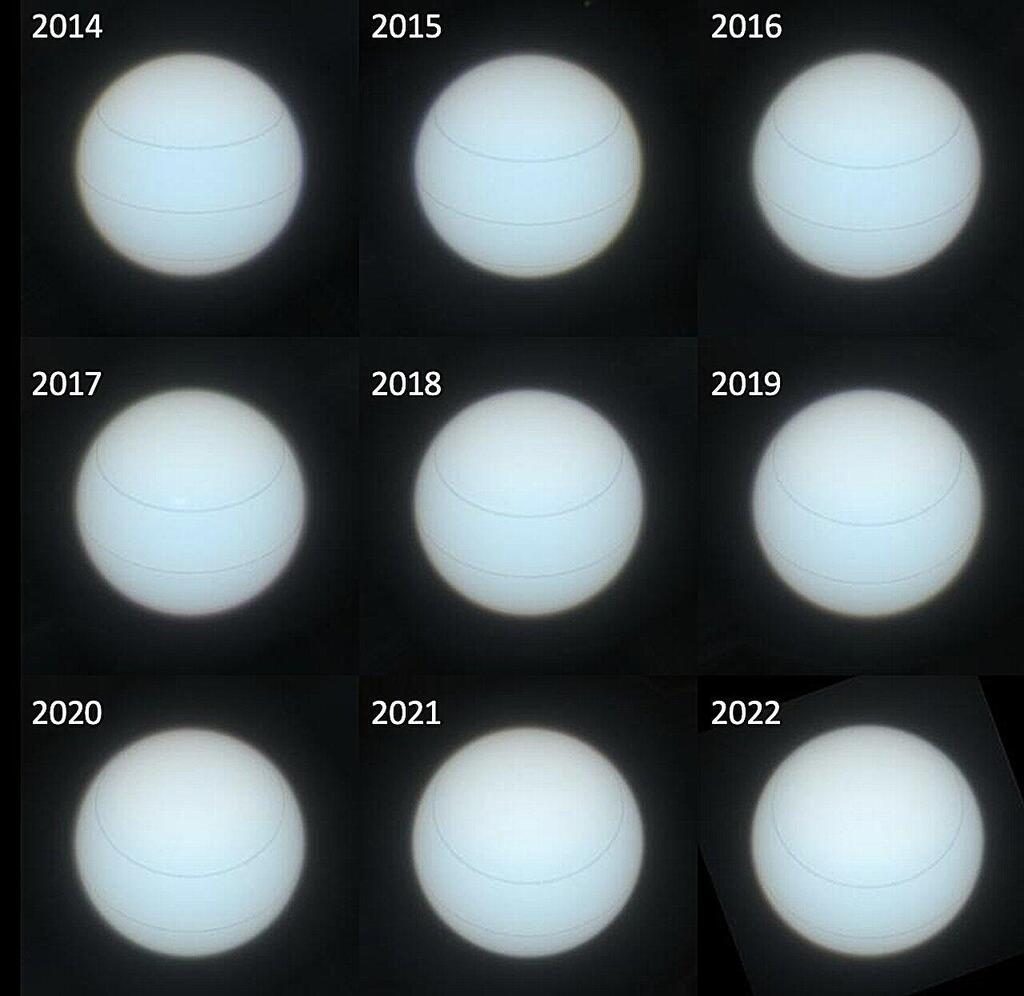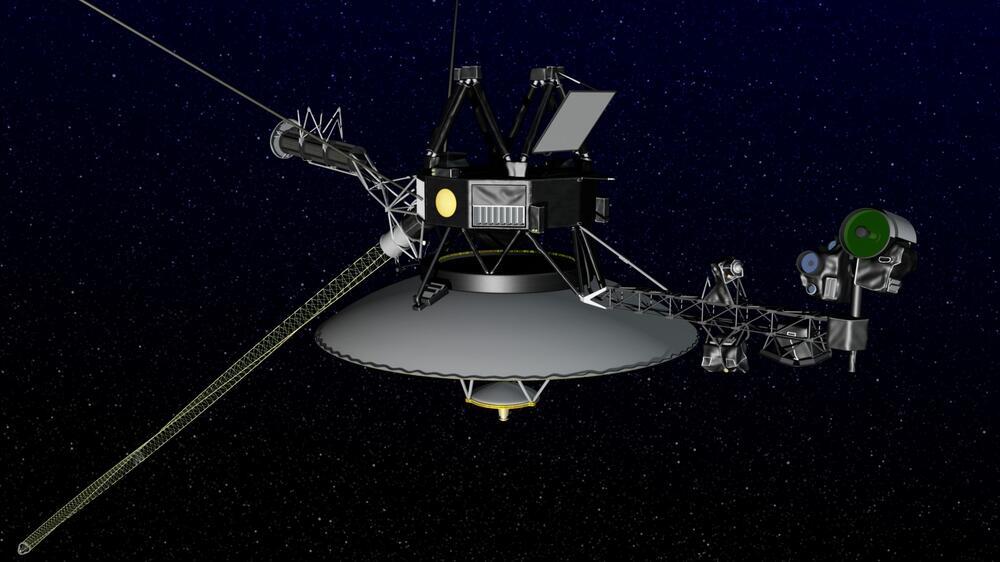Our solar system has traditionally been known to have nine planets (Pluto is no longer recognized as one), with Earth being the 3rd furthest away from the sun, and when it comes to the 7th and 8th (Uranus and Neptune respectively), the consensus was the starkest difference between the two was their colors. Uranus has a bluish-green hue, while Neptune has a deep blue impression. It seems that consensus is no more.
Read more:
Up-to-date telescopic data have shed new light on these two icy giants. It seems Neptune's actual coloring is much closer to Uranus' than previously thought.
But that's not all these two share. Their size and mass are similar in volume, both have moons and rings. The rings, by the way, are simply a collection of icy rock particles orbiting the planet. Also, both are huge and unimaginably cold. They have a stony core, made up of water, ammonia and methane, as well as a thin atmospheric layer primarily made up of hydrogen and helium.
These new findings are courtesy of an Oxford University study conducted by Prof. Patrick Irwin of the Department of Physics who works on remote sensing of planetary atmospheres. The false perception regarding their coloring stemmed from images captured in the late 80s, by NASA's Voyager 2, a space probe originally launched in the summer of 1977.
Scientists have revealed that the initial photographs of Neptune captured by Voyager 2 underwent significant contrast enhancement. This process was employed to provide a clearer depiction of the planet's atmospheric features, such as its clouds, bands and winds. These enhanced images have greatly influenced our perception of Neptune's appearance as we know it today.
"Although the familiar Voyager 2 images of Uranus were published in a form closer to ‘true’ color, those of Neptune were, in fact, stretched and enhanced," Prof. Irwin explains. "And therefore made artificially too blue. Even though the artificially saturated color was known at the time amongst planetary scientists – and the images were released with captions explaining it – that distinction had become lost over time."
Using data from the Hubble Space Telescope's Space Telescope Imaging Spectrograph (STIS) and the European Southern Observatory's Very Large Telescope's Multi Unit Spectroscopic Explorer (MUSE), researchers conducted a new study. Both instruments provide continuous spectrum data, allowing observations to be processed and determine the true apparent color of Uranus and Neptune.
Researchers utilized this data to rebalance the composite color images captured by the Voyager 2 camera and the Hubble Space Telescope's Wide Field Camera 3 (WFC3). The analysis revealed that Uranus and Neptune share a similar shade of greenish blue, challenging previous assumptions about their colors.
Prof. Irwin adds: "This is the first study to match a quantitative model to imaging data to explain why the color of Uranus changes during its orbit. In this way, we have demonstrated that Uranus is greener at the solstice due to the polar regions having reduced methane abundance but also an increased thickness of brightly scattering methane ice particles."
"The misperception of Neptune’s color, as well as the unusual color changes of Uranus, have bedeviled us for decades," states Dr. Heidi Hammel, from the Association of Universities for Research in Astronomy (AURA), who was not part of the study. "This comprehensive study should finally put both issues to rest."
The study was published in the peer-reviewed Monthly Notices of the Royal Astronomical Society journal.




